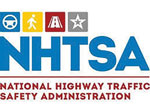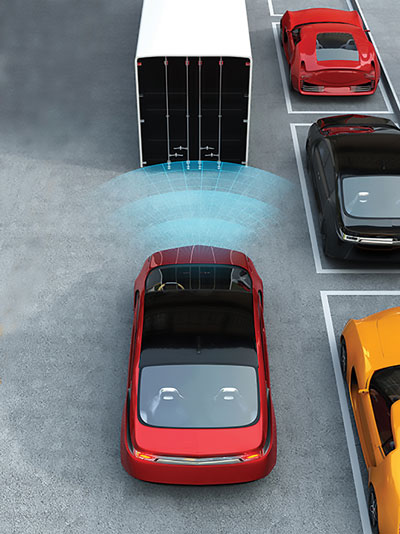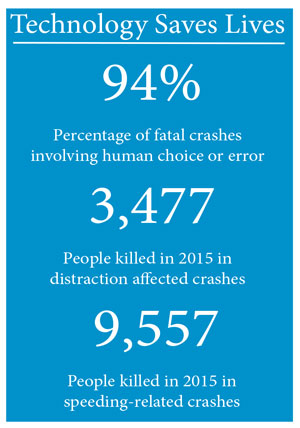
In 2015, 35,092 people died in motor vehicle crashes. Research shows that 94 percent of crashes are tied to a human choice or error. NHTSA is working to promote vehicle technologies that hold the potential to reduce the number of crashes and to save thousands of lives every year. Learn more about NHTSA’s work to bring these technologies to America’s cars and trucks.


Automatic emergency braking (AEB) systems detect an impending forward crash with another vehicle in time to avoid or mitigate the crash. These systems first alert the driver to take corrective action to avoid the crash. If the driver’s response is not sufficient to avoid the crash, the AEB system may automatically apply the brakes to assist in preventing or reducing the severity of a crash.
NHTSA believes these technologies represent the next wave of potentially significant advances in vehicle safety. AEB systems, such as dynamic brake support (DBS) and crash imminent braking (CIB), have the potential not only to save lives but also to reduce moderate and less severe rear end crashes that are common on our roadways.
If the driver brakes but not hard enough to avoid the crash, dynamic brake support (DBS) automatically supplements the driver’s braking in an effort to avoid the crash. If the driver does not take any action to avoid the crash, crash imminent braking (CIB) automatically applies the vehicle’s brakes to slow or stop the car, avoiding the crash or reducing its severity.
In 2012, one-third of all police reported crashes involved a rear end collision with another vehicle as the first harmful event in the crash. NHTSA believes that advanced crash avoidance and mitigation technologies like AEB systems could help in this area.
NHTSA’s extensive research on this technology and on relevant performance measures showed that a number of AEB systems currently available in the marketplace are capable of avoiding or reducing the severity of rear end crashes in certain situations.
Crash imminent braking and dynamic brake support have been available on some vehicle models in the United States since 2006. CIB and DBS systems are typically included in safety technology packages as optional features.
Manufacturers are using a number of different sensor combinations in production level AEB systems. The agency conducted a cost analysis of several production level systems and found that the system cost varies significantly depending on the type and number of sensors used.
A rearview video system (RVS), also known as a backup camera, is a safety technology that helps prevent backover crashes and protect our most vulnerable people—children and senior citizens. By providing an image of the area behind the vehicle, backup cameras help drivers see behind the vehicle.
When a driver shifts a vehicle into reverse, the RVS shows—either in the dashboard or in a small display in the rearview mirror—an image of the area behind the vehicle. The field of view includes a 10-foot by 20-foot zone directly behind the vehicle. It’s important to remember that rearview video systems are not a replacement for mirrors or turning around to look; rather, they’re an added safety tool for revealing hidden dangers.
Yes, in fact, by May 2018, NHTSA will require this life saving technology on all new vehicles. Until then, we recommend you look for RVSs that meet NHTSA’s performance specifications when shopping for a vehicle. Today, RVSs are optional equipment on many new cars, SUVs and trucks. To find out if RVS is available in the vehicle you’re interested in buying visit NHTSA’s 5-Star Safety Ratings and search for 2011 vehicles and newer.
FCW systems use sensors to detect slower moving or stationary vehicles. When the distance between vehicles becomes so short that a crash is imminent, a signal alerts the driver so that the driver can apply the brakes or take evasive action such as steering to prevent a potential crash.
Vehicles with this technology provide drivers with an audible alert, a visual display, or other warning signals. In this way the technology prevents frontal crashes into the rear of slower moving or stopped vehicles.
A forward collision warning (FCW) system is an advanced safety technology that monitors a vehicle’s speed, the speed of the vehicle in front of it, and the distance between the vehicles. If vehicles get too close due to the speed of the rear vehicle, the FCW system will warn that driver of an impending crash.
It’s important to note that FCW systems do not take full control of the vehicle or keep the driver from operating it.
FCW systems use sensors to detect slower moving or stationary vehicles. When the distance between vehicles becomes so short that a crash is imminent, a signal alerts the driver so that the driver can apply the brakes or take evasive action, such as steering, to prevent a potential crash. Vehicles with this technology provide drivers with an audible alert, a visual display, or other warning signals, and in this way, help prevent frontal crashes into the rear of slower moving or stopped vehicles.
Yes. FCW systems meet NHTSA’s performance specifications and we recommend you look for this technology when shopping for a vehicle. FCW systems are an option on many new cars, SUVs and trucks.
To find out if FCW is available in the vehicle you’re interested in buying visit NHTSA’s 5-Star Safety Ratings and search for 2011 vehicles and newer.
A lane departure warning (LDW) system is an advanced safety technology that alerts drivers when they unintentionally drift out of their lanes without a turn signal.
It’s important to note that LDW systems do not take full control of the vehicle or keep the driver from operating it.
LDW systems use a camera to monitor lane markings and detect when a vehicle is drifting out of its lane of traffic. When it detects that a vehicle is veering out of its lane, an audio, visual, or other alert warns the driver of the unintentional lane shifts so the driver can steer the vehicle back into its lane.
LDW systems provide a valuable safety benefit, and can help keep you and your passengers safe from crashes such as:
Yes. LDW systems meet NHTSA’s performance specifications, and we recommend you look for this technology when shopping for a vehicle. LDW systems are an option on many new cars, SUVs, and trucks.
To find out if LDW is available in the vehicle you’re interested in buying, visit NHTSA’s 5-Star Safety Ratings and search for 2011 vehicles and newer.
Using lane monitoring technology, lane keeping support (LKS) is an emerging safety technology that prevents drivers from unintentionally drifting out of their lanes.
LKS systems use information provided by sensors in a lane departure warning system (LDW) system to determine whether a vehicle is about to move out of its lane of travel. If so, LKS activates by correcting the steering, braking or accelerating one or more of the wheels, or a combination of both, resulting in the vehicle returning to its intended lane of travel.
LKS systems provide a valuable safety benefit, and can help keep you and your passengers safe from crashes such as:
NHTSA has not set performance specifications for this technology. This technology may enhance the safety of the vehicle, and you may want to consider this technology when buying a new vehicle.
An automatic crash notification (ACN) system is an emerging safety technology designed to notify emergency responders that a crash has occurred and provide its location.
In most cases, when the ACN sensor detects either that an air bag has deployed or there’s been a dramatic and sudden deceleration, the system automatically connects to an operator who will then be able to communicate with passengers in the vehicle after a crash.
The operator is also able to collect basic information from the vehicle, without passenger input, to provide to emergency responders so they can easily locate and reach the scene of the crash.
Automatic crash notification systems can reduce death and disability by decreasing the time it takes for emergency medical services to arrive at a crash scene and transport victims to a hospital. More lives can be saved and the severity of injuries reduced if a crash victim receives medical care as soon as possible, particularly within the first hour following a crash.
ACN is especially beneficial to crash victims in rural areas where there are typically fewer or no witnesses to call emergency responders.
NHTSA has not set performance specifications for this technology. This technology may enhance the safety of the vehicle, and you may want to consider this technology when buying a new vehicle.
Today, ACN systems are available as an option on many new cars, SUVs and trucks.
